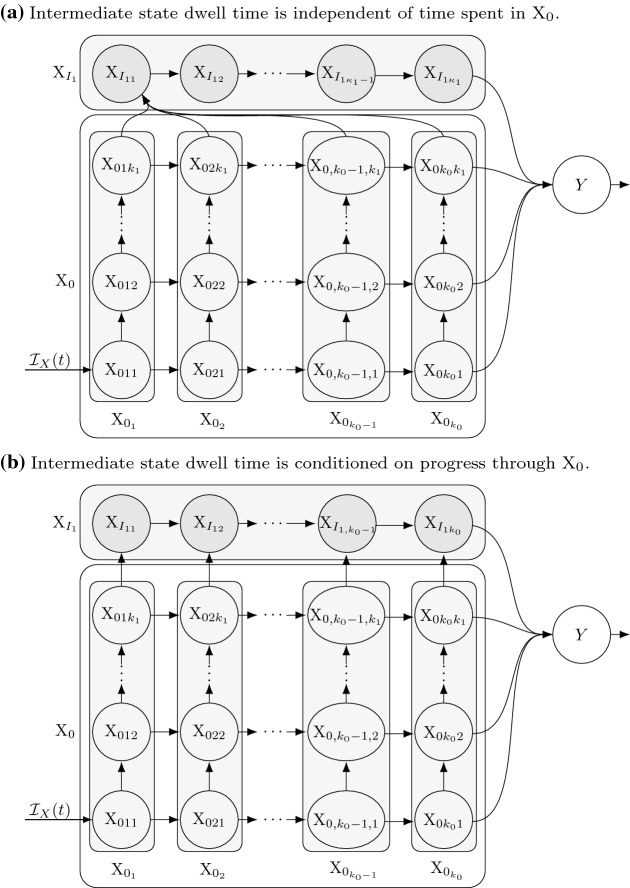Fig. 8.
When modeling sub-state transitions, e.g., from a base state X to intermediate state X (state XXX), the intermediate sub-state dwell-time can be (a) independent of time already spent in X (Sect. 3.6.1, Theorem 8), or (b) conditioned on that time so that the dwell time in state X is unaffected by the sub-state transition (Sect. 3.6.2, Theorem 9). In both cases, the dwell time distribution for X is the minimum of independent Erlang distributions, and sub-states within X are as discussed in Sect. 3.5.4. Panel (a): The dwell time in X is Erlang() and independent of time spent in X. Thus, the sub-state transition alters the overall dwell time in state X. For the more general case, see Sect. 3.6.1 and Theorem 8. Panel (b): The overall X dwell time distribution Erlang() is preserved by conditioning the dwell time in the intermediate state on the prior progress through sub-states of X, as detailed in Sect. 3.6.2. Compare the transitions from X to X in these two cases, and recall Fig. 6 and the weak memoryless property of Poisson process first event times from Sect. 3.1.2

